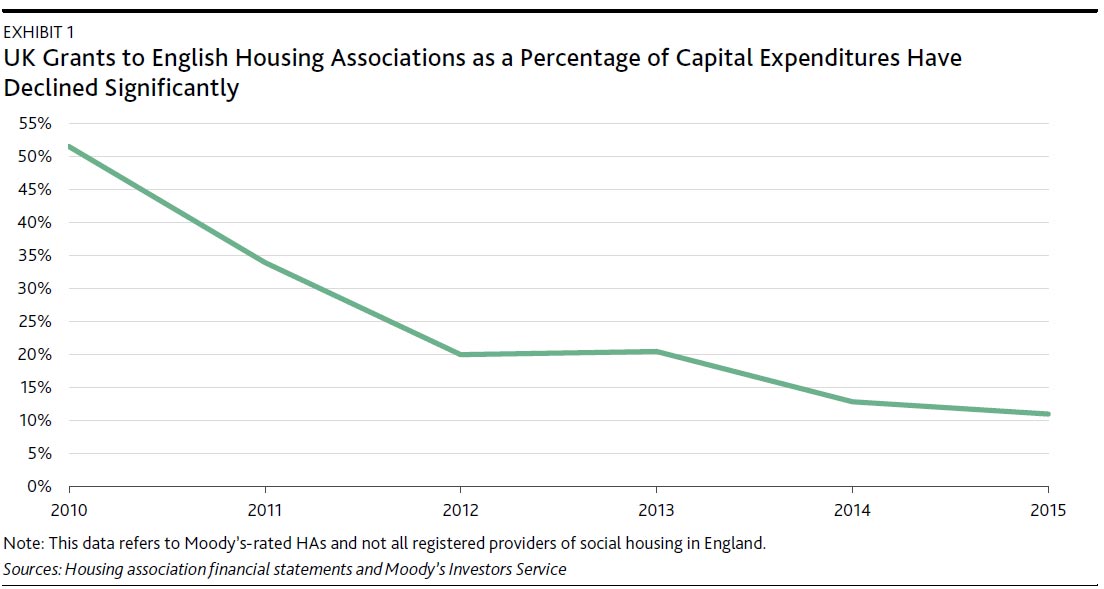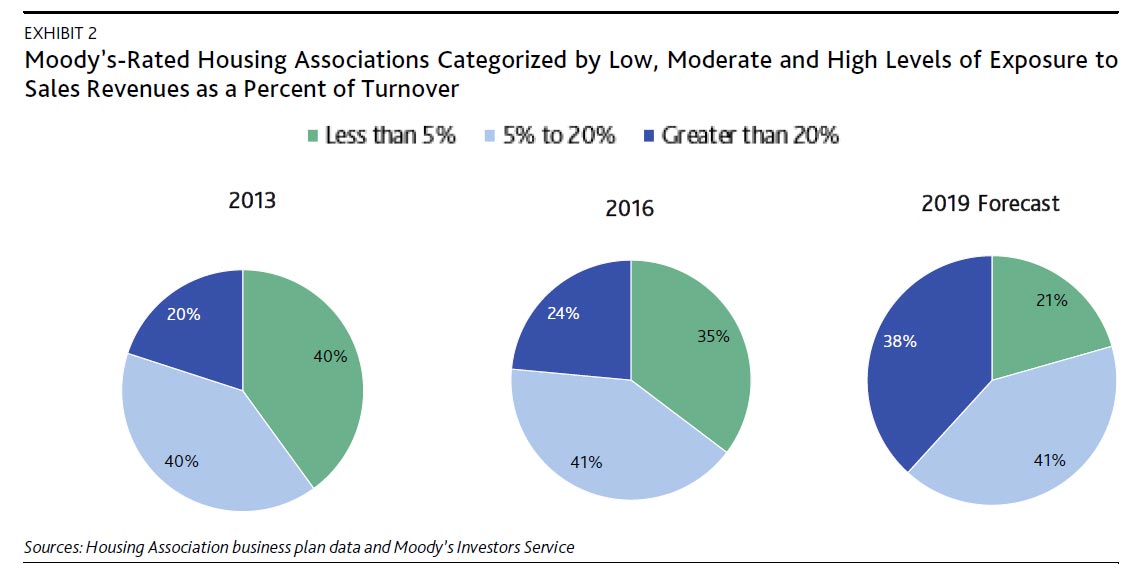Moody’s says “last Wednesday, the UK Chancellor of the Exchequer Phillip Hammond pledged in the Autumn Statement £1.4 billion in an extra capital grant for the affordable housing budget and announced relaxed restrictions on the grant programme for English Housing Associations (HAs). We view the increased grant as credit positive for HAs because it provides increased funding flexibility, and relaxed restrictions on the pre-existing grant programme, which will incentivize HAs to moderate increasingly aggressive plans to build for market sale”.
The government’s £1.4 billion increase in the Affordable Homes Programme is intended to fund 40,000 new homes for sub-market rent. The increase adds to the existing £4.7 billion capital grant programme over 2016-21, which was previously restricted to home ownership tenures. HAs have historically relied on government grants to fund the majority of social housing development, but the grants have diminished in recent years, as shown in Exhibit 1. In 2015, HAs primarily funded growth in housing properties with debt and by reinvesting operating surpluses, while grants comprised £0.5 billion and total debt of social housing registered providers grew by £4.1 billion to £63.4 billion, according to the Homes and Communities Agency. In Moody’s-rated HAs, grants funded 10% of housing capex, a level below historical average. Planned increases in HA capital expenditure should continue to raise debt; however, the increased availability of grants should moderate the incline.
The relaxed restrictions on capital grants, combined with the new grant for affordable rented homes will incentivize HAs to moderate plans for more aggressive commercial tenure mixes. In an environment of minimal grants for social housing, a growing proportion of HAs have cross-subsidized themselves by building units for sale to generate revenue to fund building in their core social rental business. We think these policy changes will mitigate a shift towards this more risky business model. New and increased grants available for affordable rented housing are likely to encourage HAs to reconsider tenure mixes, decreasing exposure to the pro-cyclical housing market, which we forecast to expand (see Exhibit 2). By 2019, about 38% of Moody’s-rated HAs will generate about one-fifth or a greater proportion of their turnover from sales, up from 20% in 2013.
Other credit-supportive announcements in the Exchequer’s Autumn Statement include the confirmation of a £3.15 billion affordable homes settlement for London, and a £2.3 billion infrastructure fund for local authorities to support housing infrastructure, which should also indirectly benefit HAs. The additional grant and relaxed restrictions in particular suggest a softening of the government’s attitude towards HAs and a reversal from the previous government’s focus on home ownership. Despite this positive policy shift, HAs’ capital grant remains low relative to the historical average, and near-term downside risks remain because of HAs’ high planned capital expenditures, increased reliance on revenue from sales, and policy uncertainty in the rental regime.


